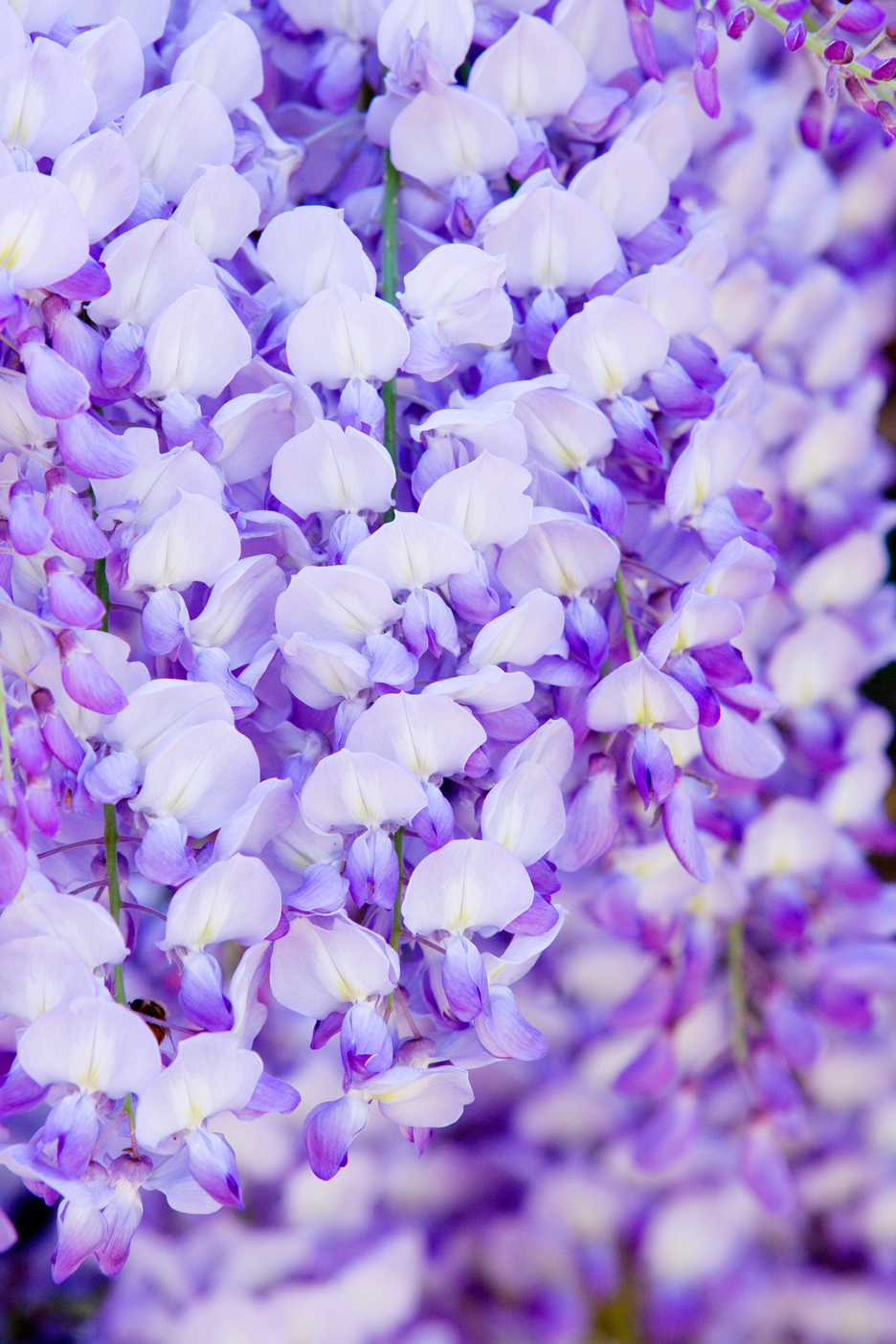
Wisteria
Grown and admired in China and Japan for over a thousand years, wisteria is one of the great garden plants.
These vigorous, long lived climbers like a sunny position with good drainage and reliable moisture during flowering and the initial growth period. In Australia they grow well in Perth, Adelaide, Melbourne, Hobart, Sydney and the mountains.
The blue form of the Chinese wisteria (Wisteria sinensis) is very popular among gardeners, but there are many other kinds available. Peter Valder looked at the two most widely cultivated Japanese species, W. brachybotrys and W. floribunda, and also discussed the best ways of displaying them.
W. floribunda
This is the best known of the Japanese wisterias. It has more flowers than the Chinese wisteria, hence the species name ‘floribunda’ which means lots of flowers. There are dozens of different cultivars and forms, including: ‘Honbeni’ – soft delicate pink flowers with a lavender tinge. ‘Kuchibeni’ – white flowers with a tinge of pink at the end of the petals and clear yellow autumn foliage. The name Kuchibeni means ‘rouge lips or lipstick’ in Japanese. ‘Shiro Noda’ – long racemes densely packed with white flowers.
W. brachybotrys
Plants in this group have very large individual flowers on long stalks and a beautiful fragrance. The species name ‘brachybotrys’ refers to the short bunches of flowers. Varieties include: ‘Shiro Kapitan’ or ‘Alba’ – strongly scented, pure white flowers appear with the leaves. Velvety pods. ‘Murasaki Kapitan’ – mauve, strongly scented flowers. This cultivar is unusual in that it twines clockwise. ‘Okayama’ – resembling Shiro Kapitan except it has faintly scented dark mauve flowers. ‘Showa Beni’ – similar to Shiro Kapitan except it has faintly scented pink flowers.
Support for wisterias
In China and Japan wisteria is often displayed on bamboo frames, but in Australian gardens this is not practicable. However, a pergola can easily be constructed from treated pine, which is readily available and affordable. The pergola needs to be high enough so that people can walk under it without brushing against the flowers, and wide enough so that two people can walk side by side. Wisterias can be trained to grow up a strong pole and then allowed to spread onto a few cross pieces. This creates a wonderful standard effect, which can be achieved with plants grown either in the ground or in pots. Probably one of the most famous displays of wisteria in the world is at Monet’s garden at Giverny near Paris, where W. floribunda ‘Shiro Noda’ grows on the railings of the Japanese bridge.
Getting started
Some of the varieties of wisteria listed above may be difficult to find. If your local nursery or garden centre does not stock them, they will be able to order them in for you. Alternatively, you may like to try: Parkers of Turramurra, NSW. Phone: (02) 9487 3888
Further information
Our segment was filmed at Nooroo, Mt Wilson, NSW, and in the garden of John Challis and Arthur Cheeseman, Wombarra, NSW. Peter Valder has written a wonderful book on wisterias. It’s called Wisterias, A Comprehensive Guide, and is published in Sydney by Florilegium (ISBN 0-646-22049-7). Price: $45.


